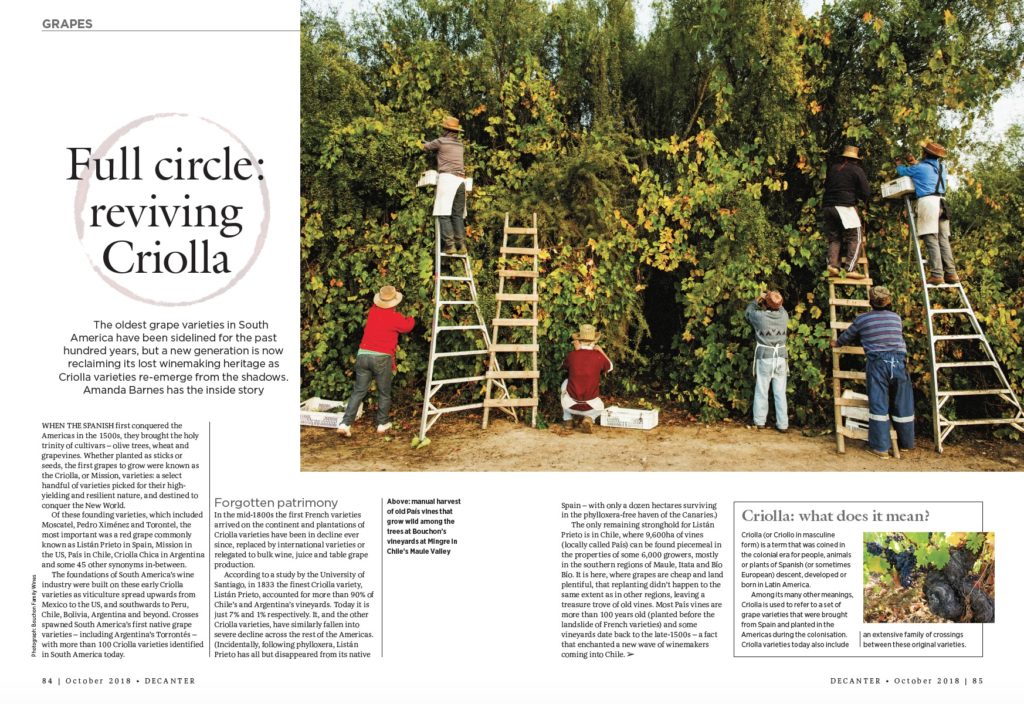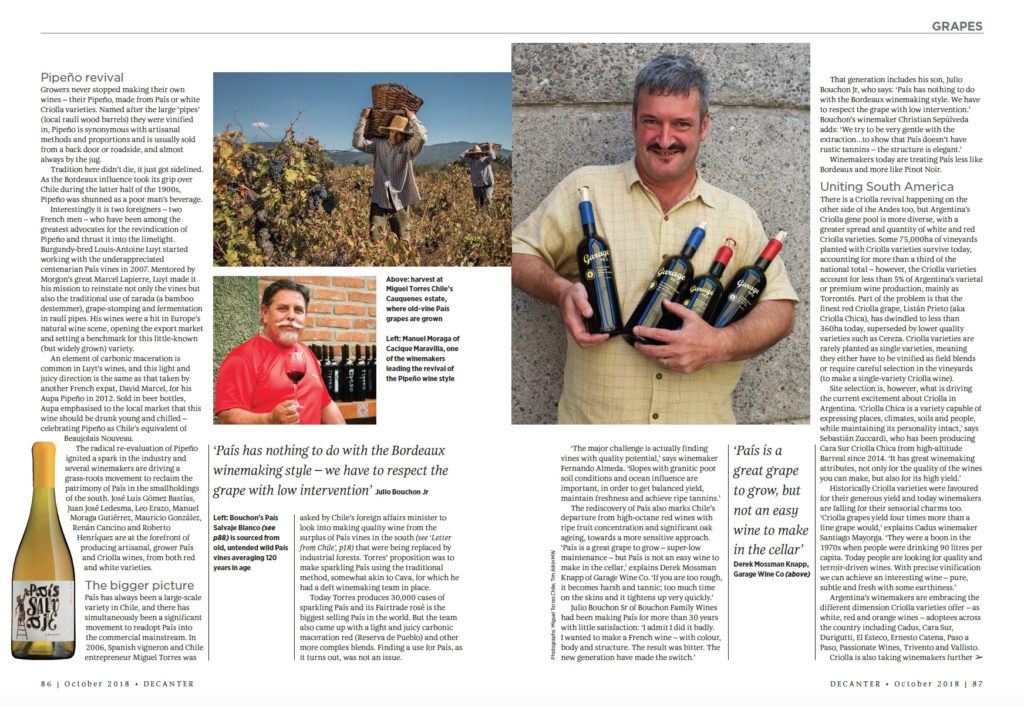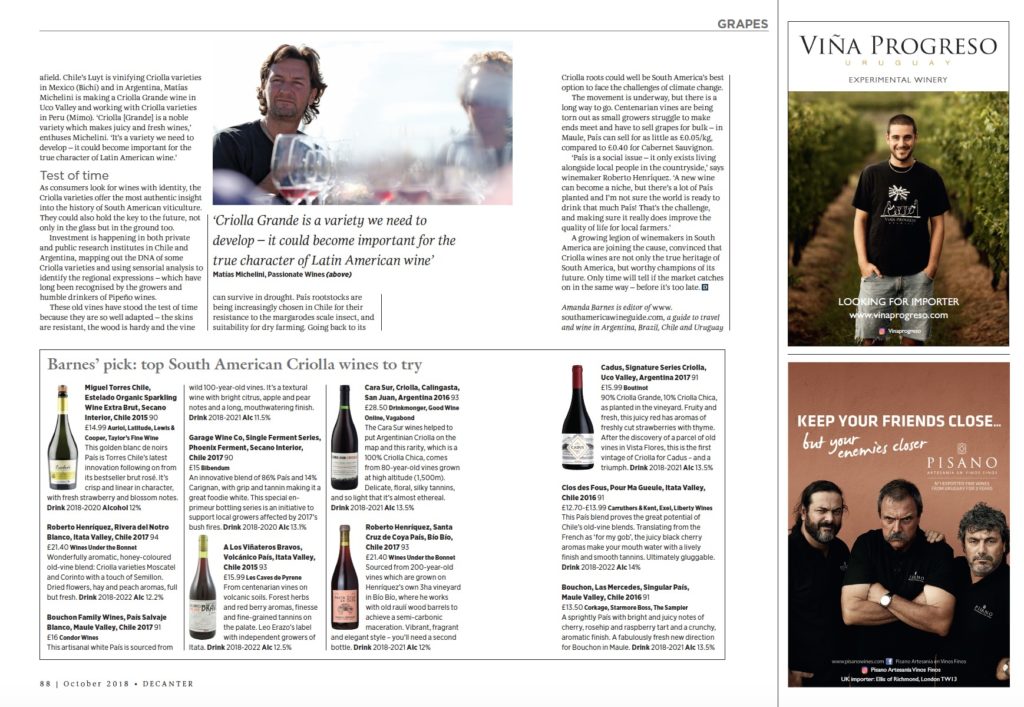The oldest grape varieties in South America have been sidelined for the past hundred years, but a new generation is now reclaiming its lost winemaking heritage as Criolla varieties re-emerge from the shadows. Amanda Barnes has the inside story…
Published in Decanter Magazine, October 2018
When the Spanish first conquered the Americas in the 1500s, they brought the holy trinity of cultivars – olive trees, wheat and grapevines. Whether planted as sticks or seeds, the first grapes to grow were known as the Criolla, or Mission, varieties: a select handful of varieties picked for their highyielding and resilient nature, and destined to conquer the New World.
Of these founding varieties, which included Moscatel, Pedro Ximénez and Torontel, the most important was a red grape commonly known as Listán Prieto in Spain, Mission in the US, País in Chile, Criolla Chica in Argentina and some 45 other synonyms in-between.
The foundations of South America’s wine industry were built on these early Criolla varieties as viticulture spread upwards from Mexico to the US, and southwards to Peru, Chile, Bolivia, Argentina and beyond. Crosses spawned South America’s first native grape varieties – including Argentina’s Torrontés – with more than 100 Criolla varieties identified in South America today.
Forgotten patrimony
In the mid-1800s the first French varieties arrived on the continent and plantations of Criolla varieties have been in decline ever since, replaced by international varieties or relegated to bulk wine, juice and table grape production.
According to a study by the University of Santiago, in 1833 the finest Criolla variety, Listán Prieto, accounted for more than 90% of Chile’s and Argentina’s vineyards.
Today it is just 7% and 1% respectively. It, and the other Criolla varieties, have similarly fallen into severe decline across the rest of the Americas.
Incidentally, following phylloxera, Listán Prieto has all but disappeared from its native Spain – with only a dozen hectares surviving in the phylloxera-free haven of the Canaries.
The only remaining stronghold for Listán Prieto is in Chile, where 9,600ha of vines (locally called País) can be found piecemeal in the properties of some 6,000 growers, mostly in the southern regions of Maule, Itata and Bío Bío.
It is here, where grapes are cheap and land plentiful, that replanting didn’t happen to the same extent as in other regions, leaving a treasure trove of old vines.
Most País vines are more than 100 years old (planted before the landslide of French varieties) and some vineyards date back to the late-1500s – a fact that enchanted a new wave of winemakers coming into Chile.
Read the full article at Decanter.com



View the PDF version here:
Read more about Criolla wines and varieties on South America Wine Guide

